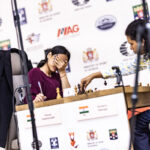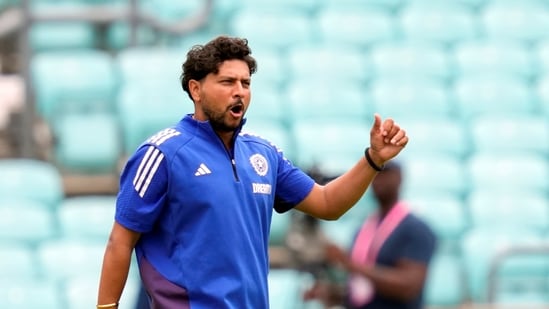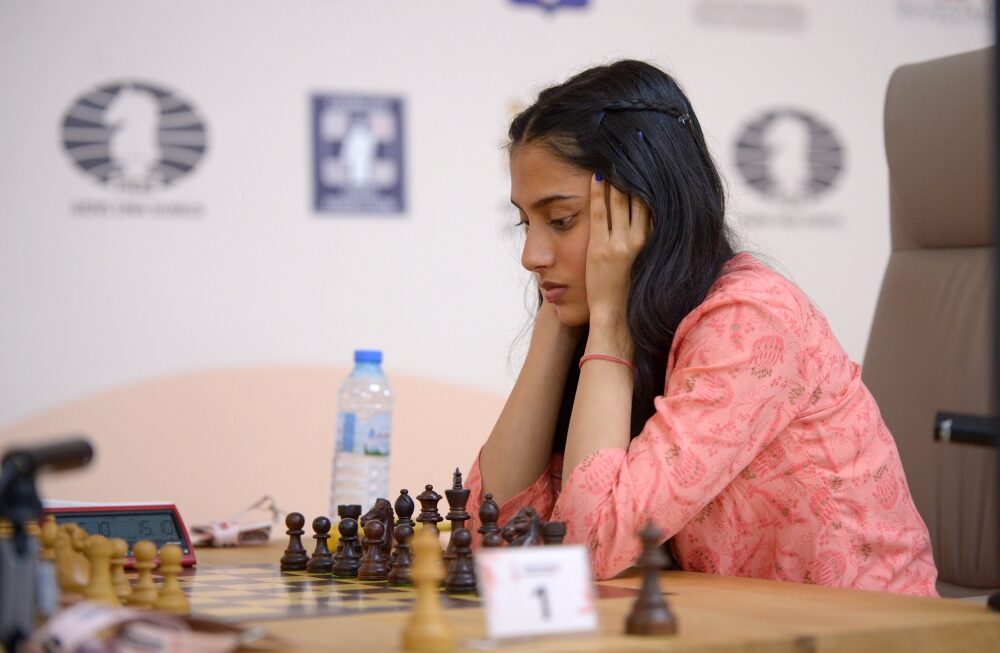Ashwani Kumar: The Resilient Rise from Obscurity to IPL Stardom with Mumbai Indians
From Financial Hardship to IPL Stardom with Mumbai Indians: In the high-stakes arena of Indian cricket, few stories resonate with the power of perseverance quite like Ashwani Kumar’s. The 23-year-old fast bowler’s journey from financial hardship to becoming Mumbai Indians’ newest sensation in the 2025 Indian Premier League (IPL) exemplifies how unwavering determination can triumph over seemingly insurmountable odds. His story isn’t just about cricket; it’s a masterclass in resilience that transcends sport.
Early Life and Formative Struggles
Born in a small village in Punjab, Ashwani Kumar’s cricket aspirations took root despite his family’s modest economic circumstances. The son of a construction worker, Kumar’s early relationship with cricket was characterized by sacrifice and innovation.
“There were days when I couldn’t afford proper cricket shoes,” Kumar revealed in a recent interview with ESPNcricinfo. “I would practice barefoot on rough grounds until my feet developed calluses that served as natural protection.”
Financial limitations presented constant hurdles. According to a profile in The Cricket Monthly, Kumar often traveled up to 30 kilometers to attend selection trials, sometimes borrowing as little as ₹30 for bus fare. His family occasionally went without essentials to support his cricket ambitions, a sacrifice that Kumar acknowledges as the foundation of his success.
His formative cricketing education came not from expensive coaching academies but from watching YouTube videos of his bowling idols and practicing relentlessly in makeshift conditions. This resourcefulness would later become a defining characteristic of his bowling style.
The Bitter Taste of Rejection
Kumar’s path to professional cricket was paved with disappointments that would have broken lesser spirits. Between 2021 and 2024, he attended trials for multiple IPL franchises, facing rejection each time:
- Kolkata Knight Riders (KKR) declined him after two trial rounds in 2022
- Chennai Super Kings (CSK) passed on him during their talent hunt program in 2023
- Rajasthan Royals (RR) expressed interest but ultimately didn’t offer a contract in early 2024
- Delhi Capitals (DC) considered him as a net bowler but didn’t pursue further
According to CricBuzz’s exclusive report, Kumar kept detailed journals of feedback received after each rejection, systematically addressing perceived weaknesses in his technique and physical conditioning. This methodical approach to self-improvement distinguishes Kumar from many talented players who fail to overcome initial setbacks.
“Each ‘no’ taught me something specific about my bowling that needed refinement,” Kumar explained to Sports Star. “I didn’t see rejections as failures but as detailed roadmaps for improvement.”
The Scientific Approach to Self-Improvement
What sets Kumar’s story apart is his analytical approach to developing his craft. Between rejections, Kumar didn’t merely practice more—he practiced smarter.
Working with local cricket mentor Ravinder Singh, Kumar established a systematic training regimen focused on three areas identified through his rejection feedback:
- Bowling speed consistency (increasing average pace from 132 km/h to a more threatening 140+ km/h)
- Developing variation (particularly perfecting the slower ball and yorker)
- Physical conditioning for injury prevention
Kumar invested in self-recording equipment to analyze his bowling action, making micro-adjustments that eventually yielded significant improvements. According to Yahoo Cricket, this scientific approach to self-coaching is rarely seen among players from non-metropolitan backgrounds in India.
The Mumbai Indians Breakthrough
The Mumbai Indians’ scouting network, widely regarded as the most sophisticated talent identification system in the IPL, finally recognized Kumar’s potential in January 2025. Zaheer Khan, Mumbai Indians’ Director of Cricket Operations, noted in the Mumbai Indians official website that Kumar’s “hunger and adaptability” stood out during trials.
“We weren’t just looking at his current skill level, but at his learning curve,” Khan explained. “His rate of improvement suggested someone with exceptional cricketing intelligence.”
Captain Hardik Pandya’s endorsement proved crucial in the final selection decision. Impressed by Kumar’s work ethic during pre-season nets, Pandya advocated for his inclusion in the playing eleven despite his lack of experience at the highest level.
Kumar’s IPL debut against defending champions KKR on April 10, 2025, exceeded all expectations. His figures of 4 wickets for 24 runs in just three overs included the prized scalps of established international stars. His performance earned him the Player of the Match award and instant recognition across the cricketing world.
“It wasn’t just the wickets, but the manner in which he set up each batsman,” noted former Indian pacer Irfan Pathan on Star Sports. “That shows a bowling intelligence beyond his years and experience.”
Technical Analysis: What Makes Kumar Special
Kumar’s bowling arsenal combines technical precision with unpredictability—a rare combination in emerging fast bowlers.
Cricket analyst Aakash Chopra detailed Kumar’s technical attributes in a detailed YouTube analysis:
- A deceptively quick arm action that makes his deliveries appear faster than the speedgun readings
- Natural ability to swing the ball both ways without telegraphing the direction to batsmen
- A distinctive release position that creates challenging angles for right-handed batsmen
- A well-disguised slower ball that maintains the same arm speed as his quicker deliveries
South African teammate Ryan Rickelton highlighted Kumar’s tactical awareness: “He doesn’t just bowl; he thinks batsmen out. In team meetings, his analysis of opposition weaknesses shows remarkable clarity for someone new to this level.”
The ICC’s performance analysis shows that Kumar’s average of 19.2 dot balls per match places him among the top economy bowlers in the current IPL season, demonstrating his value beyond just wicket-taking.
Financial Transformation and Family Impact
Kumar’s IPL contract with Mumbai Indians, reportedly worth ₹2 crore according to Indian Express, has transformed his family’s financial situation. His first priority was securing proper housing for his parents, moving them from their single-room dwelling to a proper apartment in Chandigarh.
“Cricket gave me a purpose when we had nothing,” Kumar told India Today in a recent feature. “Now it’s giving my family the security they deserve after supporting my dream through years of uncertainty.”
Beyond material changes, Kumar’s success has altered perceptions in his home village about cricket as a viable career path. Local cricket coach Surinder Sharma reports a 40% increase in youth cricket participation since Kumar’s IPL debut, with young players specifically requesting to learn fast bowling.
The Psychological Edge: Mental Fortitude
Sports psychologist Dr. Ravi Verma, who has worked with several IPL teams, identifies Kumar’s psychological resilience as his most valuable asset.
“What distinguishes Kumar from equally talented cricketers is his ability to reframe rejection as feedback rather than failure,” Dr. Verma explained to The Hindu. “This growth mindset allowed him to use setbacks as catalysts for improvement rather than reasons to quit.”
Kumar’s pre-match routine reportedly includes 20 minutes of meditation and visualization, techniques he adopted after reading about their use by international fast bowlers like Jasprit Bumrah and Pat Cummins.
Future Prospects and National Team Potential
Former Indian selector Saba Karim believes Kumar has “all the attributes” needed for international cricket. In his column for Wisden India, Karim suggested that Kumar should be fast-tracked into India’s T20I setup if he maintains his current trajectory.
“What impresses me most is his adaptability,” Karim wrote. “He’s shown different skills in different match situations, which is exactly what international cricket demands.”
India’s upcoming T20I series against Australia in August 2025 could provide Kumar with his first opportunity to don the national colors if his IPL form continues. According to BCCI sources cited by PTI, selectors are already monitoring his performance closely.
Beyond Cricket: Kumar’s Community Initiatives
Despite his newfound success, Kumar hasn’t forgotten his roots. He has already initiated plans to establish a cricket academy in his home district that will provide free coaching and equipment to economically disadvantaged children.
“When I couldn’t afford cricket gear, someone helped me,” Kumar shared with The Times of India. “Creating opportunities for kids facing similar challenges isn’t charity—it’s responsibility.”
Kumar regularly speaks at local schools about the importance of education alongside sports, emphasizing that his own academic discipline helped him develop the analytical thinking that enhances his cricket.
The Road Ahead: Sustained Excellence
The greater challenge for Kumar now lies in sustaining his early success. Cricket history is replete with promising debuts followed by fading careers when opponents analyze and adapt to new players.
Bowling coach Shane Bond, working with Kumar at Mumbai Indians, emphasized the importance of continuous evolution. “We’re already working on new variations and strategies,” Bond revealed to Sportskeeda. “In modern cricket, standing still means going backward.”
Kumar himself appears well aware of this challenge. “Getting here was difficult, but staying here will be harder,” he acknowledged after his fourth IPL match. “I’m studying more footage now than I did before my debut.”
Conclusion: A Blueprint for Aspiring Cricketers
Ashwani Kumar’s journey from borrowing bus fare to becoming an IPL star offers valuable lessons that extend beyond cricket. His methodical approach to improvement, psychological resilience, and willingness to learn from rejection provide a template for success applicable to any challenging endeavor.
As Kumar continues building his career, his story already serves as powerful inspiration for countless young cricketers from non-privileged backgrounds across India. In a cricket ecosystem often criticized for favoring players with access to expensive academies and equipment, Kumar’s rise underscores that extraordinary determination can sometimes overcome systemic disadvantages.
The true measure of Kumar’s impact may ultimately lie not in his statistics or achievements, but in how many young players from similar backgrounds his example inspires to persist despite initial setbacks. If the early indicators from his home region are any guide, Ashwani Kumar’s legacy may eventually extend far beyond his wickets and match-winning performances.













